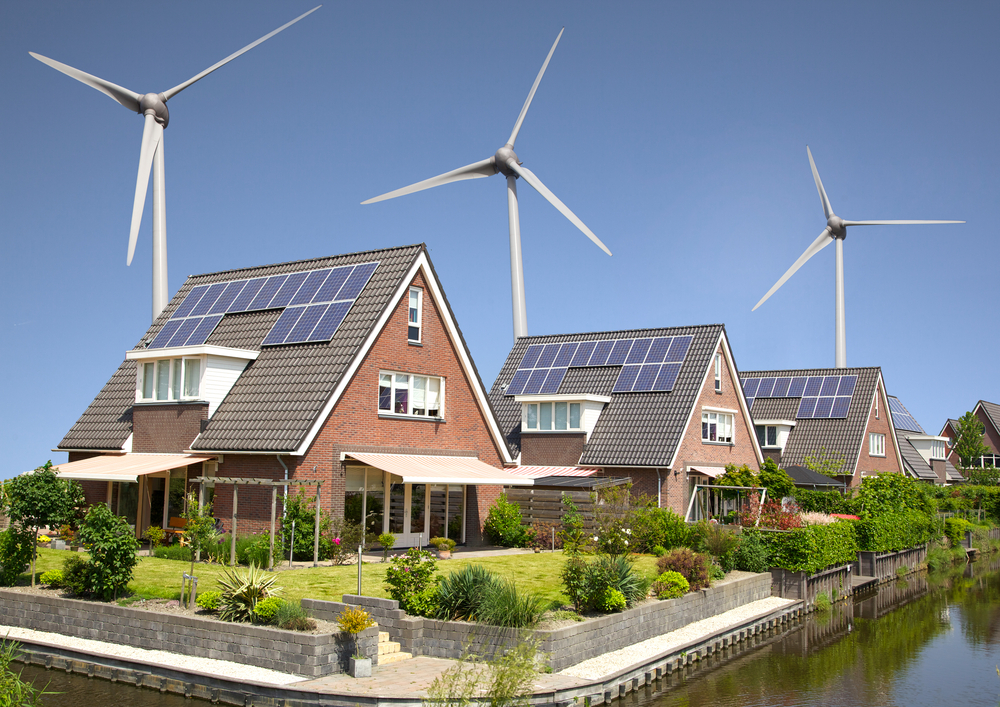Advancements in Solar Technology

As we move into 2024, the renewable energy sector is witnessing significant advancements in solar technology. One of the most notable trends is the increasing efficiency of solar panels. Recent innovations have enabled solar panels to convert sunlight into electricity more effectively than ever before. This improvement is largely due to the development of new materials and technologies, such as perovskite solar cells and bifacial panels, which can capture sunlight from multiple angles. These advancements are expected to reduce the cost per watt of solar energy, making it more competitive with traditional fossil fuels. Additionally, the integration of smart technology in solar panels allows for better performance monitoring and maintenance, further enhancing their efficiency and reliability.
Another key trend in solar technology is the emergence of solar energy storage solutions. As the adoption of solar energy grows, the need for reliable storage systems becomes increasingly critical. In 2024, we are seeing a surge in the development and deployment of advanced battery storage systems specifically designed for solar energy. These solutions enable the storage of excess energy generated during peak sunlight hours, which can then be used during periods of low sunlight or high demand. This not only ensures a steady supply of electricity but also enhances the overall stability and resilience of the power grid. The combination of efficient solar panels and robust storage solutions is poised to drive significant growth in the solar energy sector throughout 2024 and beyond.
Growth of Wind Energy Installations
The growth of wind energy installations is another major trend in the renewable energy landscape for 2024. One of the most exciting developments in this area is the expansion of offshore wind farms. Offshore wind energy offers several advantages over onshore installations, including stronger and more consistent wind patterns, which result in higher energy yields. In 2024, we are witnessing a significant increase in the number of offshore wind projects being planned and constructed around the world. Advances in turbine technology and floating platform designs have made it feasible to install wind turbines in deeper waters, opening up vast new areas for wind energy development. This expansion is expected to play a crucial role in meeting global renewable energy targets and reducing carbon emissions.
In addition to the expansion of offshore wind farms, the increased efficiency of wind turbines is a key trend driving the growth of wind energy installations. Modern wind turbines are becoming more efficient and capable of generating more electricity from the same amount of wind. Innovations such as larger rotor diameters, taller towers, and advanced blade designs have significantly improved the performance of wind turbines. Furthermore, the integration of digital technologies and predictive maintenance systems allows for better monitoring and optimization of wind farm operations. These advancements contribute to lower operational costs and higher energy output, making wind energy an increasingly attractive option for both investors and policymakers.
Emergence of Green Hydrogen
The emergence of green hydrogen is a pivotal trend in the renewable energy sector for 2024. Green hydrogen, produced through the electrolysis of water using renewable energy sources, is gaining traction as a clean and versatile energy carrier. In 2024, we are seeing a growing number of countries and companies investing in green hydrogen production facilities and infrastructure. This adoption is driven by the potential of green hydrogen to decarbonize various sectors, including transportation, industry, and power generation. As a result, green hydrogen is becoming a key component of national energy strategies and climate action plans. The increased focus on green hydrogen is expected to accelerate the transition to a low-carbon economy and create new opportunities for innovation and economic growth.
Hydrogen fuel cells are also gaining traction in the renewable energy landscape. These cells convert hydrogen into electricity, emitting only water and heat as byproducts. In 2024, we are witnessing significant advancements in fuel cell technology, making them more efficient, durable, and cost-effective. Hydrogen fuel cells are being increasingly used in various applications, including electric vehicles, portable power systems, and backup power for critical infrastructure. The growing interest in hydrogen fuel cells is supported by ongoing research and development efforts, as well as government incentives aimed at promoting clean energy technologies. As the adoption of hydrogen fuel cells expands, they are expected to play a crucial role in reducing greenhouse gas emissions and enhancing energy security.
Investment in Energy Storage Solutions

Investment in energy storage solutions is a critical trend shaping the renewable energy sector in 2024. One of the key areas of focus is the development of advanced battery technologies for energy storage. As renewable energy sources like solar and wind become more prevalent, the need for efficient and reliable storage systems becomes increasingly important. In 2024, we are seeing significant investments in next-generation battery technologies, such as solid-state batteries, flow batteries, and lithium-sulfur batteries. These advanced batteries offer higher energy densities, longer lifespans, and improved safety compared to traditional lithium-ion batteries. The continued innovation in battery technology is expected to enhance the performance and scalability of energy storage systems, enabling greater integration of renewable energy into the grid.
Another important trend in energy storage is the integration of artificial intelligence (AI) in energy management systems. AI technology is being increasingly used to optimize the operation and management of energy storage systems. In 2024, we are witnessing the deployment of AI-driven solutions that can predict energy demand, optimize charging and discharging cycles, and improve the overall efficiency of energy storage systems. These intelligent systems can also enhance the resilience of the power grid by providing real-time data and analytics for better decision-making. The integration of AI in energy management is expected to drive significant improvements in the performance and reliability of energy storage solutions, supporting the continued growth of renewable energy.
Policy Changes and Government Incentives
Policy changes and government incentives are playing a crucial role in driving the trends in renewable energy for 2024. Governments around the world are implementing new policies and regulations aimed at promoting the adoption of renewable energy and reducing carbon emissions. These policy changes include the introduction of renewable energy mandates, carbon pricing mechanisms, and stricter emissions standards. In 2024, we are seeing a growing number of countries committing to ambitious renewable energy targets and climate goals. These policy changes are creating a favorable environment for the development and deployment of renewable energy projects, attracting investment and fostering innovation in the sector.
Government incentives are also boosting the trends in renewable energy for 2024. Financial incentives such as tax credits, subsidies, and grants are being offered to support the adoption of renewable energy technologies. In addition, governments are providing funding for research and development, as well as for the construction of renewable energy infrastructure. These incentives are helping to reduce the cost of renewable energy projects and make them more competitive with traditional energy sources. In 2024, we are seeing an increase in public-private partnerships and collaborations aimed at accelerating the transition to a sustainable energy future. The continued support from governments is expected to play a key role in driving the growth of renewable energy and achieving global climate objectives.




